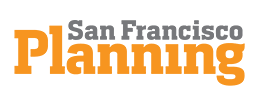The inclusionary housing program aims to create housing affordable to low-, moderate-, and middle-income households in new buildings.
Background
What is Inclusionary Housing?
San Francisco's Inclusionary Housing Program1 requires new market-rate residential projects of 10 or more units to pay an Affordable Housing Fee or meet the inclusionary requirement by providing a percentage of the units in the project as "below market rate" (BMR) units. BMR units must be rented or sold at a price that is affordable to low- or middle-income households, either "on-site" within the project, or "off-site" at another location in the city, generally within one mile of the market-rate project. All inclusionary units, whether they are rental or ownership units, are distributed through a lottery system run by MOHCD.
The most common options for complying with the Inclusionary Ordinance are via the on-site, off-site and in-lieu fee options. On-site inclusionary units are constructed by developers and are comparable to market rate units in the project. Off-site inclusionary projects are either constructed by the developer of the market rate project or built in partnership with a non-profit housing developer.
Several area specific requirements exist throughout the city, but in general the citywide inclusionary requirements are as follows:
| Inclusionary Option | Small Projects (10 to 24 units) | Large Projects (25+ units) |
|---|---|---|
On-Site |
13% below market rate units | 19% rental / 21% ownership condo 2 |
Off-Site |
20% below market rate units | 30% rental / 33% ownership condo |
In-lieu Fee |
$199.50 per square foot, charged on 20% of the project’s residential Gross Floor Area | $199.50 per square foot, charged on 30% of the project’s residential Gross Floor Area (rental) $199.50 per square foot, charged on 33% of the project’s residential Gross Floor Area |
*As of January 1, 2019. This increases every year.
Why is Inclusionary Housing Important?
The Inclusionary Housing program is essentially the only program that produces permanently affordable housing units at no upfront cost to the City. Inclusionary housing promotes mixed-income communities and allows for public sectors to counter declining resources available for affordable housing development. Private residential developers are a part of the solution to produce affordable housing.3
Key Trends
Since the inception of the program, over 2,200 new affordable housing units were created as a result of the inclusionary program;
of those approximately 2,200 inclusionary units, 1,040 are rental units.
Most of these inclusionary units were created in the eastern part of the City where most new development occurs.
New inclusionary units are split fairly evenly between rental and ownership units.
The City has collected over $440 million through in-lieu fees since 2003,
contributing a major local funding source for affordable housing.
What’s Happening Now to Enhance Inclusionary Housing?
The upcoming Inclusionary Technical Advisory Committee (TAC) will be reassessing the inclusionary rates throughout the City and determine whether a new feasibility study is required to identify new inclusionary rates.
Issues with Inclusionary Housing
Tying the production of inclusionary housing to market rate development means units are only produced when the market for new housing is strong, and when economic conditions encourage new housing production. It also means units are only produced in areas of the city where market conditions and/or existing zoning allow and encourage housing development. Even in years where there is high housing production, most new projects tend to be in the east side of the city. For example, even in 2016, no inclusionary affordable units were built on the entire west side of San Francisco where multifamily housing development options are limited.
For Future Consideration
The ideas for future consideration that have the potential to increase community stability in San Francisco are described below. They provide a starting point for agencies, decision-makers, and community members to explore stabilization efforts and identify critical pathways forward. Based on preliminary information, staff is qualifying these ideas according to the type of task, scale of resources and level of complexity to underscore that any of these ideas would require time and additional resources not currently identified. These are not City commitments or recommendations, rather informed ideas that will require careful vetting and analysis as to their reach, resource needs, feasibility, unintended consequences, legal implications, and racial and social equity considerations.
Optimize inclusionary rate through the Triennial Technical Advisory Committee (TAC)
The Triennial Inclusionary Technical Advisory Committee (TAC) is set to convene in 2019 and will re-examine the City’s inclusionary housing rate. As part of recent legislation, the TAC was also directed to examine the inclusionary rates required as part of HOME-SF. The goal is to set rates that maximize the amount of affordable housing produced by the City’s various programs, taking into consideration changing market conditions and construction costs. The Department is gathering data on HOME-SF projects as they come in and will provide it to the TAC as context.
| Type of Response | Mitigation |
|---|---|
| Type of Task | Regulation
|
| Resource | Generally only staff time would be required
|
| Complexity | Less Complex – generally no or limited legislation and/or an existing program, and one agency involved
|
| Timing | Short Term: 1 year or under
|
| Geographic Scale | Citywide |
| Partners | Planning, Inclusionary Technical Advisory Committee (TAC), Board of Supervisors |
| Benefit | This can help maximize affordable housing produced. |
| Challenge | This would require more resources and additional research of newer programs such as density bonus programs. Setting the appropriate rate is challenging given market fluctuations and political pressure. |
Homeowners Association dues protections
To protect BMR homebuyers from excessive annual HOA dues increases and from excessive special assessments, projects could include several strategies. The HOA governance structure and bylaws could include a Master Homeowners Association (Master HOA) and two sub-associations, one consisting of the Inclusionary Units and the units within the Affordable Project and a second sub-association consisting of the market rate units. The Master HOA Board of Directors could be representative of both sub-associations and could approve all dues increases with a super majority. The Office Community Investment and Infrastructure (OCII) worked with the project sponsor to include protections for BMR unit residents in the Transbay Redevelopment Project’s Transbay Block 1 (160 Folsom Street).
| Type of Response | Mitigation, Early Intervention |
|---|---|
| Type of Task | Funding, Regulation
|
| Resource | Generally only staff time would be required
|
| Complexity | Less Complex – generally no or limited legislation and/or an existing program, and one agency involved
|
| Timing | Long Term (more than 5 years)
|
| Geographic Scale | Citywide |
| Partners | Planning, Office of Economic and Workforce Development (OEWD), developers |
| Benefit | Low- and moderate-income homebuyers subject to changing HOA fees will be relatively protected from massive fee hikes that may put their housing stability at risk. |
| Challenge | This would require more resources and funding. |
MOHCD Inclusionary Housing Program
Learn More »FOOTNOTES:
1. The Program is governed by Planning Code Section 415 and the Inclusionary Housing Program Procedures Manual, and is administered by the Mayor's Office of Housing and Community Development (MOHCD) and the Planning Department.
2. On-site units produced by the inclusionary program must be rented to households making between 55% and 80% of Area Median Income (AMI) (for reference: a one-person household making up to $66,300, a two-person household making up to $75,750, or a four-person household making up to $94,700) or sold to households making between 80% and 130% of AMI (for reference: a one-person household making up to $107,750, a two-person household making up to $123,100, or a four-person household making up to $153,900).

